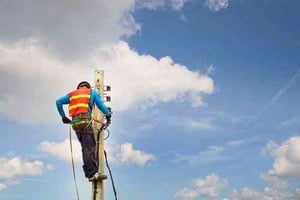Preparing Your Staff: One Touch Make Ready and Broadband Deployment
 The FCC’s One Touch Make Ready (OTMR) order has placed the joint use community and its personnel in a new and uncharted landscape for broadband deployment.
The FCC’s One Touch Make Ready (OTMR) order has placed the joint use community and its personnel in a new and uncharted landscape for broadband deployment.
It has the potential to change roles within businesses and the joint use community at-large. OTMR remedies the obstructions previously blocking new attachers from the safe access to utility assets they need. To perform their own make ready work, attachers may do their own construction and design following a brief waiting period.
The order will tighten timetables for each of the joint use steps, from the first inquiry and application process to the period in which make ready work is complete.
OTMR establishes requirements for determining which contractors are qualified for make ready work. Utilities are encouraged to use the criteria to select contractors or provide their own list of requirements that meets the OTMR-Based Regime. The order also established the requirements that new attachers must meet to ensure the other parties have an opportunity to inspect completed make ready work.
It lays out guidelines for distinguishing simple attachments, which are permitted under the fast-paced OTMR rules, from complex attachments, which still require a more lengthy and detailed deployment process. One Touch Make Ready also prohibits state and local governments from delaying deployment by declaring moratoria.
All of these changes are intended to speed deployment of new broadband and enable increased competition as the industry moves forward.
Are Joint Use Employees Ready?
With the proper support system, joint use professionals (from engineering to accounting and joint-use-specific roles) can smoothly transition to the OTMR-Based regime.
Despite the new changes, much of the important work to be done under OTMR is precisely what joint use staff are already trained to do: review permit applications, evaluate and choose contractors, reconcile billing and invoices, and work with engineering departments for pole safety and access.
The minutiae of OTMR is what seems so overwhelming to businesses who are required to follow OTMR protocol. How do professionals continue with their business-as-usual tasks, while simultaneously taking expansive time to transition?
Maximizing Resources
Fortunately, there are alternative solutions and processes. Companies can make a streamlined transition to OTMR with their joint use personnel. The key is getting started the right way.
Alden Systems and McLean Engineering are working together to help companies get started with One Touch Make Ready. McLean has created an automated workflow for our joint use platform, Alden One®.
The workflow is OTMR-specific. It works with joint use professionals and their teams to streamline engineering, accounting, and permitting. It facilitates coordination and communication internally, as well as with outside companies.
Among other features, the platform incorporates the asset owner’s list of approved make ready contractors, making for smoother interactions between utilities and attaching companies. The number one goal of the workflow is to keep companies on both sides of joint use compliant with FCC standards.
Alden consultants are available to help companies get the system in place. We will walk employees through each part of the process. Our goal is to help owners and attachers save their energy and time during this complex new process.
Alden One® enables companies to make the most out of their current resources and get OTMR compliant in an effortless manner. Click the link below to speak with one of our consultants today.
What challenges does your company face in making the switch to One Touch Make Ready procedures? Contribute to the dialogue in the comments below.
